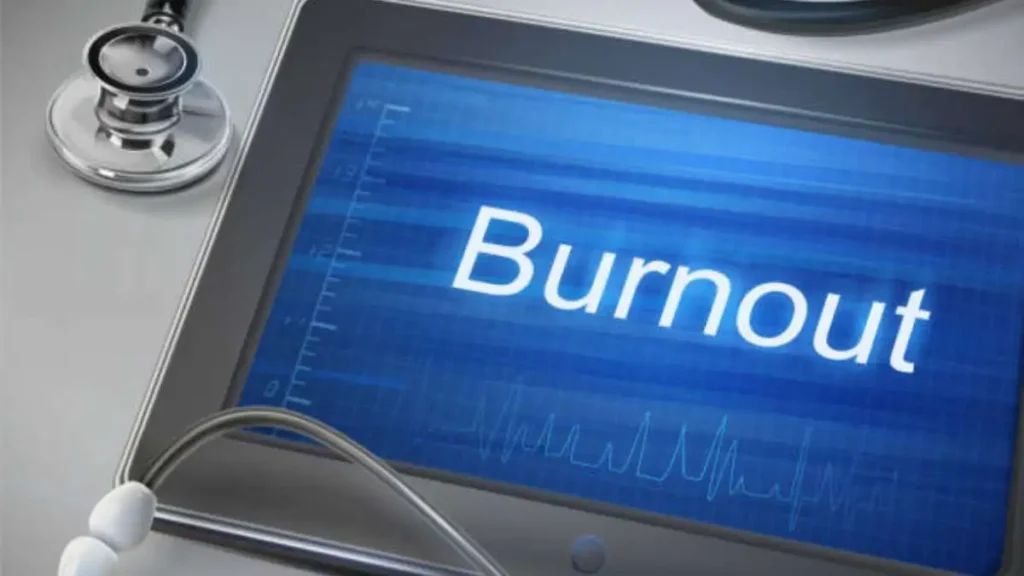HEALTH AND FITNESS
Addressing Physician Burnout: Causes, Symptoms, & Solutions

Even though physician burnout is considered a health crisis, there is little to no conversation about it. The medical practice is incredibly draining, so it can take a horrible toll on a physician’s health. To overcome this issue, it is essential to understand the symptoms of physician burnout, its causes, and the steps that can be taken to address this crisis.
Table of Contents
What is Physician Burnout?
Physician burnout stems from multiple factors, including the overwhelming burden of administrative tasks, excessive working hours, and high expectations. These issues lead to mental and physical exhaustion, emotional detachment, and a reduced sense of accomplishment, severely impacting physicians’ well-being and job satisfaction.
Common Causes of Physician Burnout
Overwhelming burden of administrative tasks
Physicians do not go through five years of med school to stare at a computer screen for hours. Their job is to tend to patients, not sort out their paperwork. As per a Medscape report, 74% of physicians claim they spend at least 10 hours on administrative tasks. Keeping up with compliance documents, insurance documents, claim submissions, and other records adds to the already tiring workload.
For every hour physicians spend with patients, they spend another one or two hours on paperwork, including documenting visits, sorting records, writing prescriptions, and ordering tests. Even though Electronic Health Records(EHR) supposedly ensure better productivity, they are very draining, especially for people whose main job is not to keep up with them. Physicians feel disconnected from patients due to EHRs, as it feels like they are treating data instead of the patient.
Excessive Working Hours
It is natural to feel annoyed at the long lines of patients when you visit a clinic to get an appointment. But imagine the burden on the other side of the table. Physicians often work very long hours, seeing multiple patients daily. This can be very mentally and physically exhausting and, thus, causes burnout.
According to the 2023 Medscape report, more than half of physicians felt burnt out if they were working over 60 hours a week. These working hours lead to a lack of time for other aspects of life, like meeting family and friends and maintaining relationships. This compromises the work-life balance to a severe degree.
High Expectations
Doctors are held up to impossible standards when it comes to their job. They have complete responsibility for the patient’s health but little control over clinical decisions and work schedules. Mere negligence could cause one to lose one’s health. This pressure, along with the expectations, can be very stressful and overwhelming.
This might also create room for imposter syndrome, where the physician feels like they are not competent enough. Maintaining one’s online reputation is important because it opens the gateway for new patients. According to a recent Tebra survey, 88% of physicians get anxious about receiving negative feedback, which builds a lot of pressure. The prime directive doctors are urged to follow is that ‘patients come first’, even if it is at the cost of their well-being.
Moreover, there is a lack of facilities available for doctors to take care of their mental health. If they are accessible, physicians do not go for them due to the fear of jeopardizing their medical licenses. Physicians are put on a pedestal, which draws them to a final breakpoint, i.e., physician burnout.

Signs and Symptoms of Physician Burnout
Signs and symptoms of physician burnout include mental and physical exhaustion, emotional detachment, and a reduced sense of accomplishment. These indicators manifest as chronic fatigue, cynicism towards patients, and decreased self-esteem, significantly affecting physicians’ personal and professional lives.
Exhaustion
One of the first and the most apparent indicators of physician burnout is when physicians feel mentally and physically exhausted. Not being able to wake up in the morning, not having any energy throughout the day, limiting your social interaction, and making no space for hobbies are signs of exhaustion. One feels fatigued to such an extent that they become incapable of fulfilling work demands; there are more mistakes than usual at work. There is a loss of interest in everything. This exhaustion can also manifest itself in physical ways where one feels chronic fatigue, headaches, and sleep disturbances.
Emotional Detachment
One of the most important things that give doctors a sense of fulfillment, is the connection they establish with their patients. Having patients trust you is a motivation for work. But, when one starts adopting cynical attitudes towards patients and showcasing a lack of empathy, it means they have become desensitized to the miseries of their patients. This depersonalization arises from emotional detachment and is a sign of physician burnout where you gain a negative outlook toward everyone.
Reduced sense of accomplishment
Burnout leads to a severe decrease in a person’s self-esteem. Even if a physician works adequately, he might still not be fulfilled and undermine himself continuously. The value of his work and effort is constantly questioned in his mind. This can drive the physician to a slump where he might even become a victim of depression.
Solutions to Physician Burnout
Solutions to physician burnout involve reducing administrative burdens, managing workloads, fostering a healthy work-life balance, and providing organizational support. These strategies help improve physicians’ well-being, increase job satisfaction, and prevent burnout.
Reducing administrative burden
To minimize the administrative burden, it is vital to incorporate an intuitive EHR system that is easy to use and speeds up the documentation process. An efficient billing software could submit claims more efficiently than before. With the help of features like pre-built templates, customizable documentation tools, and duplication shortcuts, billing errors will be minimized, resulting in fewer chances of physician burnout.
However, you can also outsource billing and healthcare revenue cycle management services to professionals. Outsourced medical billing services reduce physicians’ administrative burden by handling billing tasks, freeing up time for patient care, reducing paperwork, and ensuring timely payments.
Workload Management
It is essential for physicians not to do everything on their own, especially when they already have an ample amount of responsibility. To maximize productivity, the tasks can be delegated to other employees. This is why staffing should be done adequately, according to the amount of work. Moreover, there should be flexible work schedules to reduce patient load and balance it through the week.
Healthy Work-life balance
The Medscape Physician Lifestyle and Happiness report shows that 27% of physicians take just 1 to 2 weeks off annually. Taking time off, exercising regularly, spending time with family, and making space for hobbies are ways physicians can prioritize their health, despite their challenging work requirements. It is necessary to strike such a balance between your professional and personal life to stay refreshed.
Organizational support
Your surroundings play a huge part in maintaining your stress levels. Fostering a community that grows through mutual love and support is essential. Effective leadership that keeps workers engaged and stress-free needs to be implemented.
According to Mayo Clinic’s research, “a one-point increase in the leadership score of a physician’s supervisor leads to a 3.3% decrease in the likelihood of physician burnout and a 9 % increase in satisfaction”. Initiatives like wellness programs or resilience training should be incorporated into the schedules, where physicians would find a sense of community and emotional support.
Bottomline
Physician burnout is a very grave issue. It has caused many healthcare workers to quit. As per a report by Forbes, 47% of all doctors will have left the profession by 2025. Similarly, the Association of American Medical Colleges predicts that there will be a shortage of up to 48,000 primary care physicians in the US by 2034. To counter this, the problem of physician burnout must be addressed seriously.
-

 GENERAL2 months ago
GENERAL2 months agoUncovering the World of кинокрадко: The Dark Side of Film Piracy
-

 GENERAL2 weeks ago
GENERAL2 weeks agoUnveiling the Art of преводсч: How Translators Bridge Language Barriers
-

 YOGA1 year ago
YOGA1 year ago4 Person Yoga Poses for Beginners
-

 GENERAL2 months ago
GENERAL2 months agoThe Journey of iamnobody89757: From Anonymous User to Internet Sensation


























